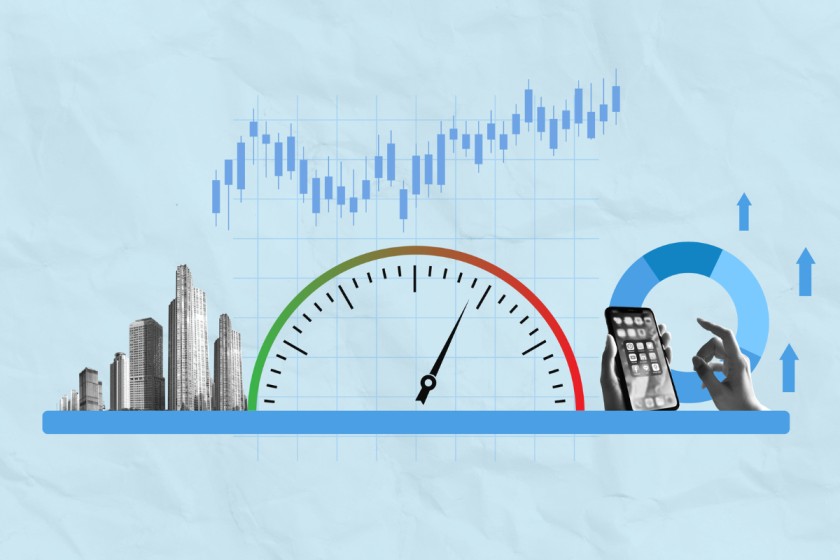- July 26, 2024
A slippery slope for Indian Business Confidence: A Deep Dive into IMA India’s Q2FY25 BCPI Report

IMA India’s Q2FY25 BCPI report reveals a cautious optimism amid macroeconomic uncertainties and a resilient capital expenditure intent.
In the ever-volatile world of corporate sentiment, the latest findings from IMA India’s Q2FY25 Business Confidence and Performance Index (BCPI) paint a cautiously optimistic yet cautious picture. As the index took a slight tumble, dropping by 2 points to 63.2 in July 2024, the data reveals an intricate interplay between a weakening macroeconomic outlook and a resilient capital expenditure intent. This report uncovers the nuanced shifts and sectoral disparities defining the current business landscape in India.
The big picture: BCPI Index dynamics
July 2024 saw the BCPI index dip by 2 points, settling at 63.2. This decrease contrasts with the previous quarter’s 3.1-point rise, signalling a tempered optimism among businesses. The primary culprits for this downturn are a 3.2-point drop in the macroeconomic outlook and a 3-point decline in business performance projections. Yet, amid these declines, the capital expenditure (capex) intent rebounded by 4 points to 57.6, showcasing a renewed willingness to invest in future growth despite the prevailing uncertainties.
Notably, while many firms perceived an economic weakening over the past three months, a near-majority (46%) expect conditions to improve by October. This sentiment underscores a complex blend of caution and hope within the corporate sector.
Sectoral insights: Manufacturing vs Services
A sectoral dissection reveals a divergent narrative between manufacturing and services. Six out of seven sectors experienced quarter-on-quarter improvements, with the IT & ITeS and automotive sectors leading the charge, posting gains of 16.3 and 12.1 points, respectively. Conversely, industrial companies lagged, registering a decline.
Manufacturing firms, though witnessing a minor 20 basis point drop from the previous quarter, remained relatively stable compared to the services sector, which recorded a substantial 5.1-point fall. This significant drop in the services sector can be attributed to a slowdown in discretionary consumer spending, which has disproportionately affected services companies.
Sales, orders, and profitability: A mixed bag
The report indicates a marginal weakening in both sales growth and new orders. Only 53% of firms anticipate stronger sales in Q2 compared to Q1, down from 55% who reported improvements in the previous quarter. Similarly, 49% foresee an uptick in new orders, a slight drop from the 52% who observed growth earlier. However, the net score for sales saw a slight rise, suggesting a cautious yet persistent optimism.
In terms of profitability and capacity utilisation, the outlook is less rosy. About one-third of companies expect profitability to improve, but a majority anticipate it to remain steady. This trend suggests that profitability and capacity utilisation may be hitting a trough, with further data needed to confirm this hypothesis.
B2B vs B2C: Demand dynamics
The demand dynamics reveal contrasting fortunes for B2B and B2C firms. B2B companies report robust demand from the healthcare, industrial, and general services sectors, while the automotive and chemicals sectors lag. In contrast, B2C firms continue to thrive in tier 1 cities, with rural markets showing a promising recovery, outpacing tier 2/3, tier 4, and semi-urban markets.
Hiring and Capital Expenditure: Divergent trends
Hiring trends paint a picture of restraint, with only 29% of companies planning to increase hiring in the July quarter, down from 36% in the previous quarter. Conversely, capex plans have strengthened, with 62% of firms expecting to approve new investments, up from 52% in Q1. This divergence highlights a strategic focus on long-term growth through capital investments, even as immediate hiring plans are curtailed.
Soft Spends: Plateauing or declining?
Discretionary spending on advertising, travel, and team-building activities appears to be plateauing. While about a third of firms plan to increase their advertising and marketing budgets, spending on team-building and travel shows signs of stabilisation or slight decline. Notably, consumer goods companies remain the most optimistic about soft spends, while the healthcare sector is the most bearish.
IMA India’s Q2FY25 BCPI report provides a snapshot of an economy grappling with uncertainty yet demonstrating pockets of resilience. The nuanced findings reveal a corporate sector navigating through a complex landscape, balancing cautious optimism with strategic investments. As businesses brace for the months ahead, the interplay between macroeconomic conditions, sectoral performance, and strategic priorities will shape the future trajectory of India’s business confidence.

Shivani Srivastava
Shivani is a Senior Editor at CFO Collective - An IMA Company. Her passion lies in engaging with senior finance leaders to delve into topics such as AI, technology, corporate finance, and sustainability, extracting invaluable insights that she transforms into enriching material for the finance community.
